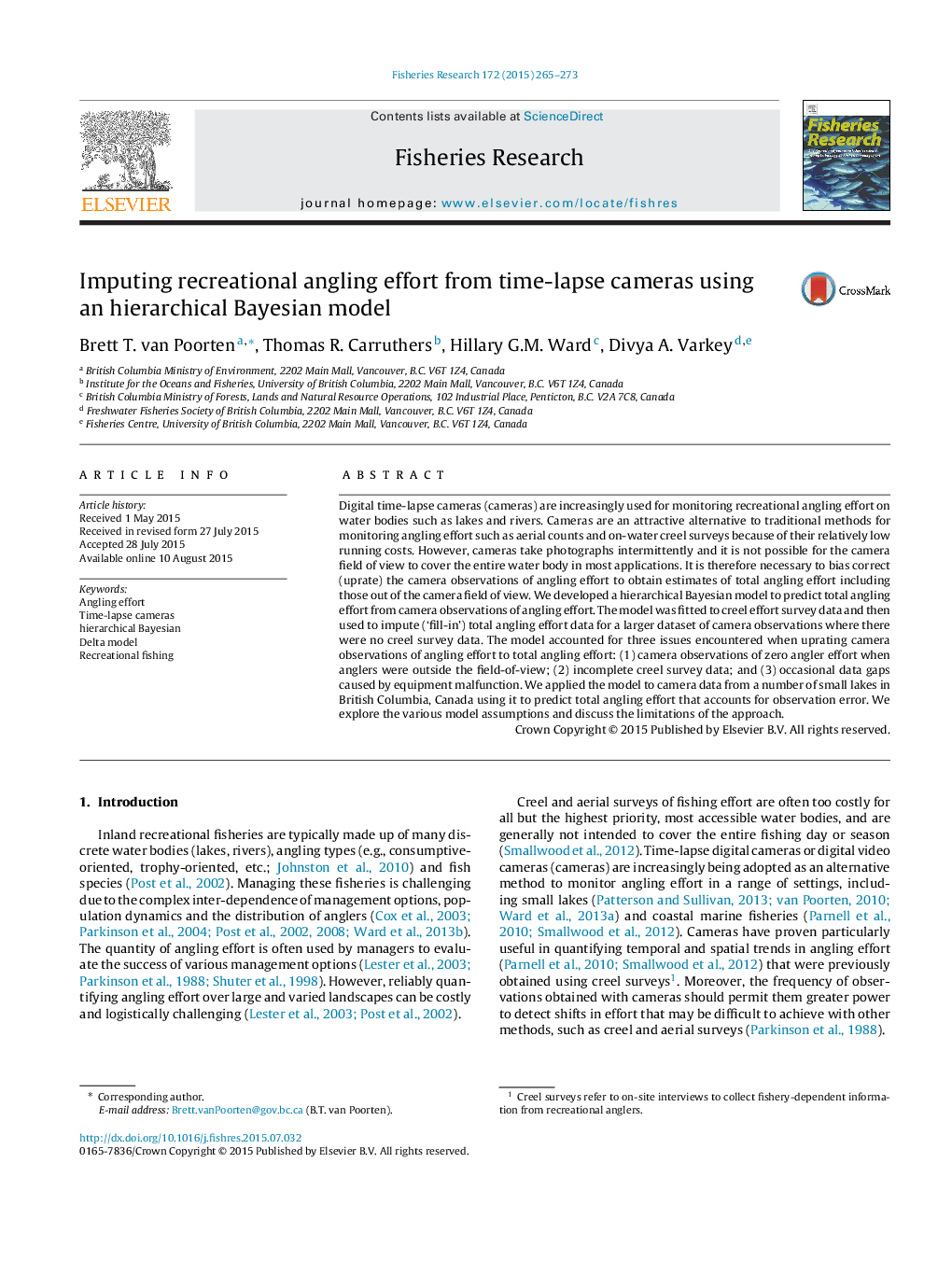| کد مقاله | کد نشریه | سال انتشار | مقاله انگلیسی | نسخه تمام متن |
|---|---|---|---|---|
| 6385447 | 1626796 | 2015 | 9 صفحه PDF | دانلود رایگان |
- We present multiple candidate models for predicting angling effort from indices obtained from time lapse digital cameras.
- Models account for excessive zeros common when only a proportion of the fishing area is monitored using cameras
- We include a method for filling data gaps when cameras fail to collect data.
- Selected model suggests that mean effort when camera detects no anglers is different between weekends/weekdays, as is the expansion when cameras do see effort.
- Model addresses several shortcomings inherent when using cameras to predict angler effort.
Digital time-lapse cameras (cameras) are increasingly used for monitoring recreational angling effort on water bodies such as lakes and rivers. Cameras are an attractive alternative to traditional methods for monitoring angling effort such as aerial counts and on-water creel surveys because of their relatively low running costs. However, cameras take photographs intermittently and it is not possible for the camera field of view to cover the entire water body in most applications. It is therefore necessary to bias correct (uprate) the camera observations of angling effort to obtain estimates of total angling effort including those out of the camera field of view. We developed a hierarchical Bayesian model to predict total angling effort from camera observations of angling effort. The model was fitted to creel effort survey data and then used to impute ('fill-in') total angling effort data for a larger dataset of camera observations where there were no creel survey data. The model accounted for three issues encountered when uprating camera observations of angling effort to total angling effort: (1) camera observations of zero angler effort when anglers were outside the field-of-view; (2) incomplete creel survey data; and (3) occasional data gaps caused by equipment malfunction. We applied the model to camera data from a number of small lakes in British Columbia, Canada using it to predict total angling effort that accounts for observation error. We explore the various model assumptions and discuss the limitations of the approach.
Journal: Fisheries Research - Volume 172, December 2015, Pages 265-273
